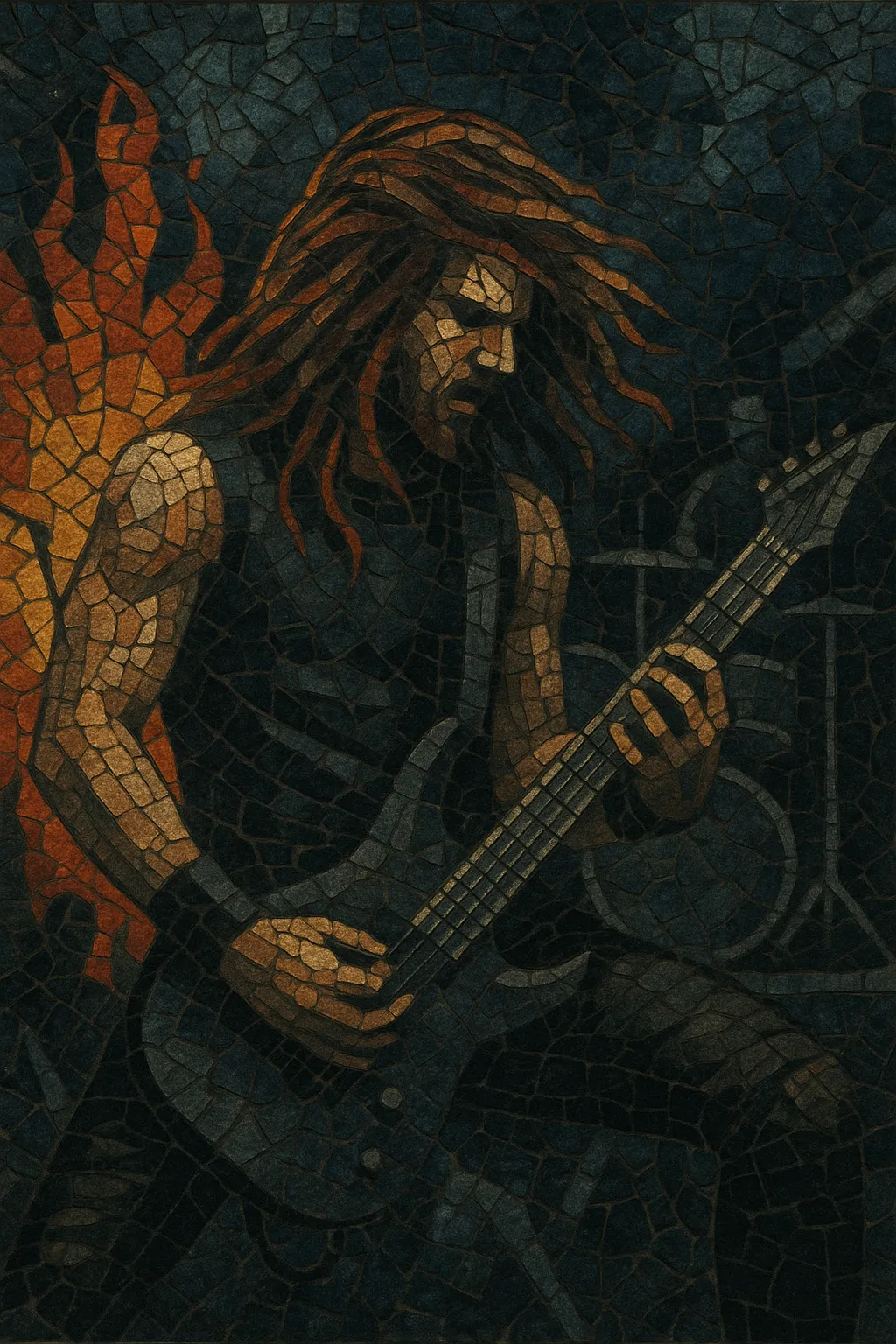
Melodic metalcore blends the harmonized guitar leads and minor-key melodicism of Gothenburg-style melodic death metal with the breakdown-heavy aggression and song structures of metalcore. It is characterized by dual vocal approaches that alternate between harsh screams and soaring clean choruses, along with tightly palm-muted riffs and double-kick driven drumming.
Typical arrangements feature verse–pre-chorus–chorus structures, with a post-chorus hook, a melodic guitar solo, and a climactic breakdown. Tunings are often dropped (Drop C, Drop B, or lower), and guitar parts favor harmonized lines in thirds, pedal-point riffs, and modal color from Aeolian and Phrygian. Lyrical themes usually focus on resilience, introspection, personal struggle, and catharsis.
Melodic metalcore emerged as U.S. metalcore bands began incorporating the harmonized lead-guitar language of Swedish melodic death metal (In Flames, At the Gates, and Dark Tranquillity) into the breakdown-centric and hardcore-informed metalcore framework. The New England scene, especially Massachusetts, became a key hub where hardcore punk discipline met Gothenburg melodicism.
By the mid-2000s, bands such as Killswitch Engage, As I Lay Dying, Unearth, and Trivium popularized the formula of screamed verses, clean anthemic choruses, and heroic twin-guitar leads. Albums of this era cemented genre tropes: drop tunings, tight editing, precise double-kick patterns, and hook-forward songwriting. The sound crossed over to mainstream metal audiences through Warped Tour/Ozzfest circuits and international touring.
The 2010s saw production become more polished, with emphasis on punchy low-end and layered vocals. Bands from the UK, Germany, and Australia (e.g., Architects, Heaven Shall Burn, Parkway Drive) pushed dynamics, socio-political lyric themes, and atmospheric textures. Parallel hybrids appeared: electronicore folded in synths and programming, while some groups explored progressive song forms and expanded harmony.
Melodic metalcore’s call-and-response of harsh/clean vocals and its blend of melody with heaviness reshaped modern heavy music. Its songwriting blueprints influenced electronicore, easycore, and aspects of deathcore and trap metal, while remaining a durable touring and festival staple worldwide.
Use two high-gain guitars (often in Drop C or Drop B), bass locked to kick patterns, and a drum kit emphasizing double-kick and tight cymbal work. Employ a vocal approach that alternates harsh screams/growls with strong, clean choruses to create contrast and release.
Write riffs in Aeolian and Phrygian modes, and harmonize lead lines in thirds to achieve a Gothenburg-style melodic contour. Combine pedal-point chugs with moving upper melodies, and craft memorable pre-chorus hooks that set up a catchy, singable chorus.
Balance mid-to-fast tempos (approximately 120–180 BPM) with syncopated chugs and gallops. Design breakdowns that resolve rhythmic tension—use half-time feels, accent displacement, and rests for impact. Ensure drums articulate transitions clearly with fills that cue changes and heighten energy.
Use harsh vocals for verses to convey intensity, and switch to clean, anthemic vocals for choruses to deliver emotional payoff. Write lyrics about perseverance, personal struggle, healing, and social themes. Keep phrasing tight over riff accents, and layer harmonies in the chorus for lift.
Adopt a verse–pre-chorus–chorus design with a bridge that features either a melodic solo or a breakdown. Place the breakdown after the second chorus for maximum effect, and consider a brief clean-guitar interlude to widen dynamics before the final hook.
Tighten performances with precise editing while preserving pick attack and transient clarity. Sculpt a modern low end by pairing bass with kick drum fundamentals, and emphasize guitars around the upper mids for lead definition. Use tasteful reverb and delay on leads and cleans, and multitrack chorus vocals for width.

